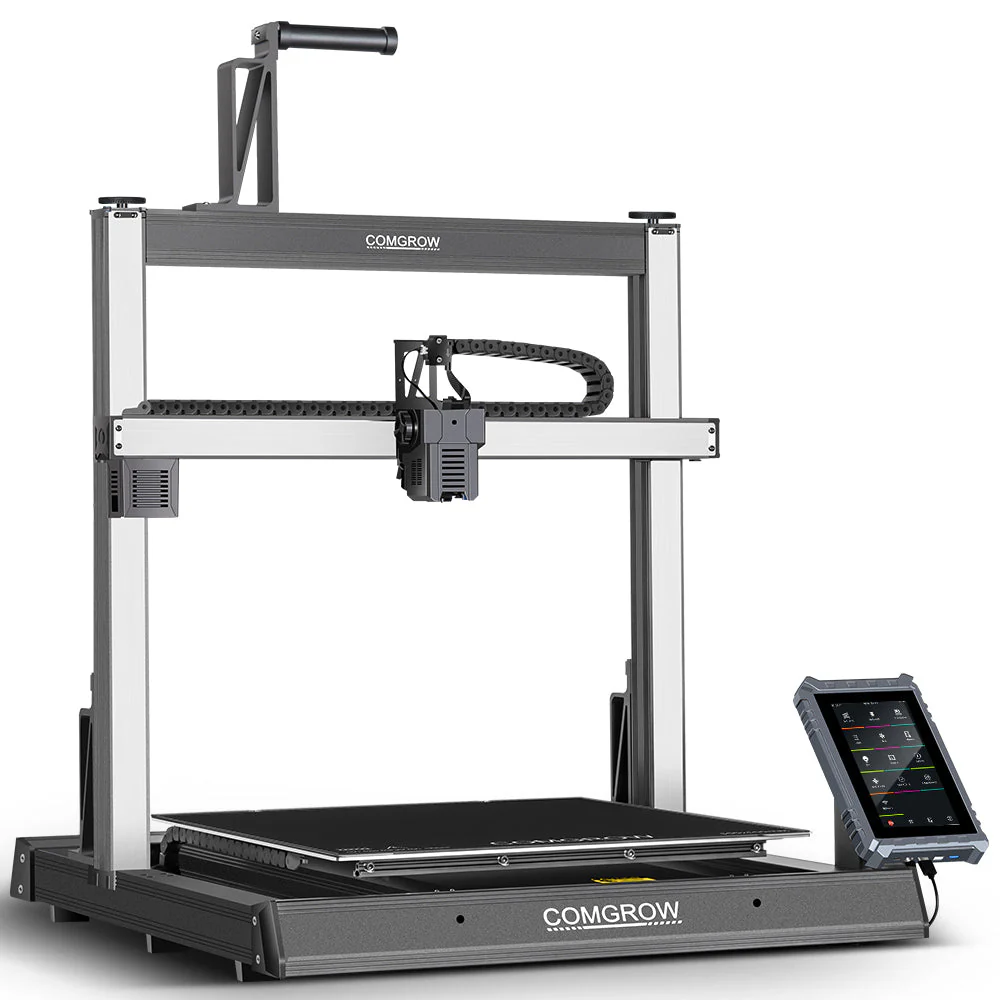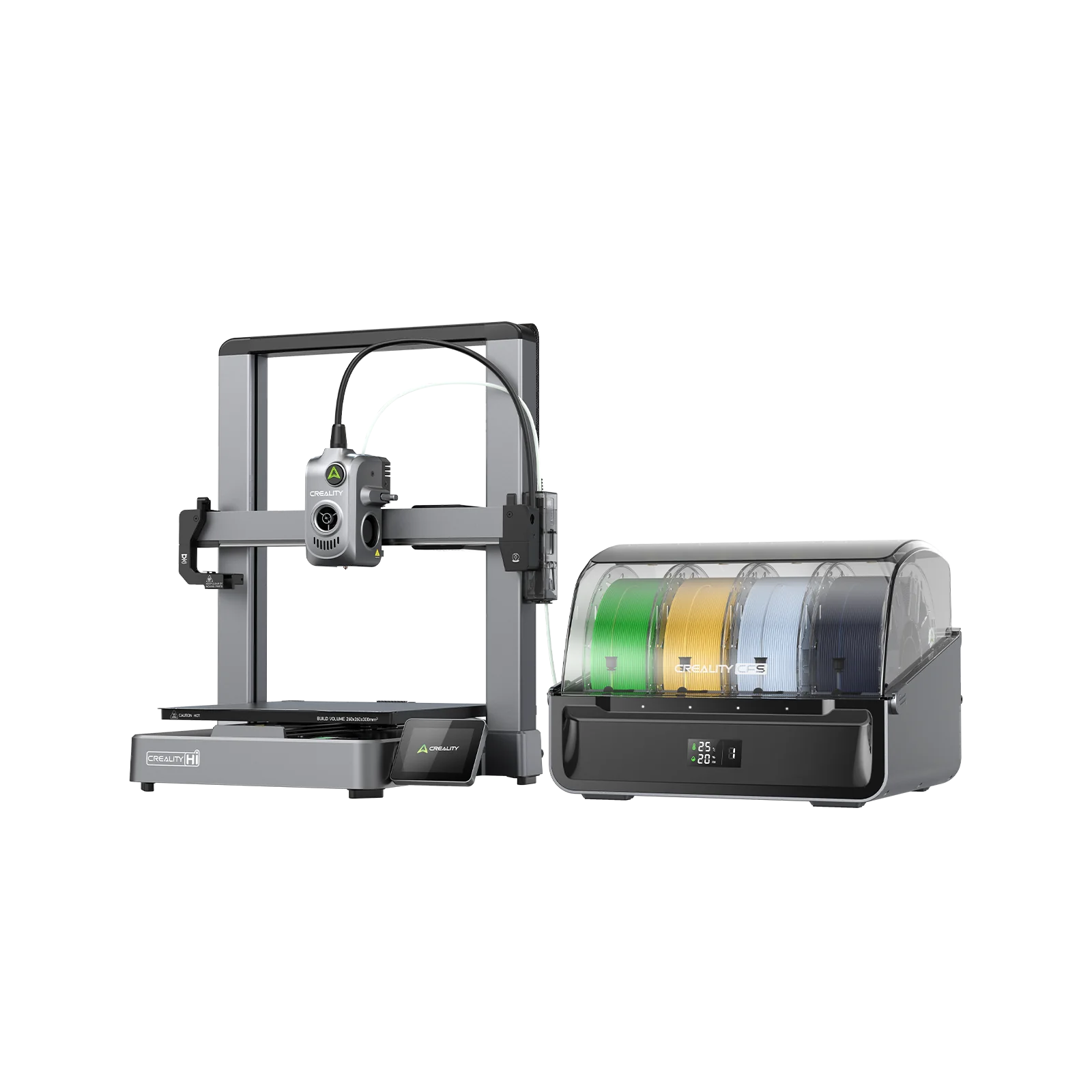Compare Comgrow T500 vs Hi Combo
Comparison between the best 3D printers
Choose the best 3D printer at the best price. The cheapest 3D printers are here.
Buy a 3D printer here with 3D Fila.
 |
 |
|
| Model | Comgrow T500 |
Hi Combo |
| Printing Material | Filament | Filament |
| Buy Filament for Sovol Comgrow T500 | Buy Filament forCreality Hi Combo | |
| Estimated price | $799,00 | $469,00 |
| Manufacturer | Sovol | Creality |
| Release Year | 2024 | 2025 |
| Print Volume [mm] | 500x500x500 | 260x260x300 |
| Printer Size [mm] | 817x810x962 | 409x392x477 |
| Weight [kg] | 39 | 19,14 |
| Power Loss Recovery | YES | YES |
| Enclosed printer | NO | NO |
| Bed Leveling | Automatic | Automatic |
| Filament End Sensor | YES | YES |
| Bed type | Heated | Heated |
| Power supply system | Direct Drive | Direct Drive |
| Standard nozzle | 0,4 | 0,4 |
| Maximum Nozzle Temperature [°C] | 300 | 300 |
| Maximum Bed Temperature [°C] | 80 | 100 |
| Maximum printing speed [mm/s] | 500 | 500 |
| Filament holder | YES | YES |
| Camera for supervision | NO | NO |
| Recommended filaments | PLA, PETG, Fibra de Carbono, TPU | Hyper-PLA/PLA/PETG/ABS/PLA-CF |
| Recommended slicers | Creality Print, Cura 5.0 ou superior, Prusa Slicer, Orca | Creality Print 5.1 |
| Maximum Resolution [mm] | 0,1 | 0,1 |
| Processor | ||
| Display | 7'' IPS touchscreen, 60Hz | Touchscreen 3,2'' |
| Power Supply | 500 W | 390 W |
| Connectivity | SD Wifi Creality Cloud | |
| Operating systems | Windows, Linux e Macbook | |
| Date of registration in the system | 2024-07-18 | 2025-01-27 |
| Release date | 2024 | 2025 |
| Extra features | The Sovol Comgrow T500 stands out for its large print volume of 500x500x500 mm, ideal for large-scale projects. It has a direct extruder with a gear ratio of 6.5:1, speeds of up to 200 mm/s, and high-performance motors. The 7" touchscreen with Klipper software makes navigation easy. The 49-point automatic leveling ensures a perfect first layer. It also has a full metal hotend at 300°C, linear rails on all axes, and WiFi connectivity. | The Creality Hi Combo is an advanced 3D printer featuring the CFS system for up to 16 colors and intelligent filament management. It boasts a robust metal frame, speeds up to 500 mm/s, precise auto-leveling, an integrated extruder design, easy-to-swap tri-metal nozzle, and active vibration sensing for smooth prints. Its 95% pre-assembled, with a foldable touchscreen, built-in camera with privacy protection, and Creality OS support for a seamless and powerful experience. |
| Support for multiple colors and materials (AMS and CFS) | NO | YES |
Notes * |
||
| Cost-benefit | 7 / 10 | 8 / 10 |
| Hardware | 3.6 / 10 | 6 / 10 |
| Tela | . | . |
| Print volume | 5 / 10 | 4 / 10 |
| Performance | 4 / 10 | 4 / 10 |
Conclusion |
| In comparing the Comgrow T500 and the Hi Combo 3D printers, several key factors highlight their distinct advantages and potential drawbacks. The **Comgrow T500**, priced higher, offers a substantial print volume of 500x500x500 mm, catering well to large-scale projects. Its features include advanced automatic leveling, a powerful touchscreen interface, and a robust build quality enhanced by linear rails, making it a strong contender for those focused on high-volume production and precision. However, its cost-effectiveness is rated lower, indicating that while it provides quality and performance, the investment may not necessarily correspond to the breadth of features offered. On the other hand, the **Hi Combo** presents a notable advantage with its lower price point and enhanced features such as the CFS system for multi-color printing, a foldable touchscreen, and a camera with privacy protection. Its integration of intelligent filament management makes it more versatile, appealing to users who desire advanced functionality without a steep financial commitment. Its slightly smaller print volume and lighter construction may limit its use for larger projects but does not detract from its overall performance, as its ratings in cost-benefit and hardware are comparatively higher. In conclusion, potential buyers should consider their specific printing needs and budget. The Comgrow T500 is suited for those who prioritize print scale and robust build quality, while the Hi Combo offers excellent value and versatility for users interested in multi-color options and efficient printing at a lower cost. Each printer caters to different user priorities, making the choice dependent on individual requirements and project goals. |

